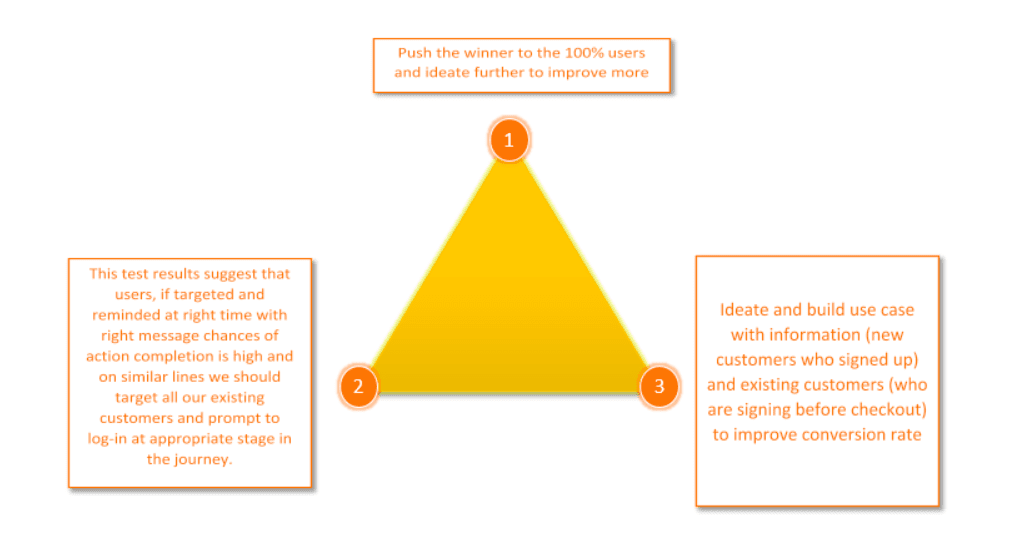Experience optimisation (EXO) is the need of the hour for all the companies and for all the industries — be it B2B or B2C — consumer wants to save time and expects to have a personalised experience. In the era of instant gratification and number of choices available, certain industries are heavily dependent on EXO. For example, in the travel and hospitality sector, hotels are already facing challenges from online travel agencies (OTA) as they often have only one visit to convert users to customers. In such situations, it is important that we test, learn and improve continually to look out for smart ways to achieve the business objective.
In this article, we will present examples on how we can break overall programmes into small pieces and focus on maximising potential business value at each step.
In a normal EXO programme, the tests are conducted to solve a particular business problem or capitalise on an opportunity. However, to make it a successful experience optimisation, we often recommend focusing on continual learnings to see how the result of a test is on other parts of the website, other channels and so on. This definitely sounds very intuitive. So how do we adopt this as part of the EXO process? Let us discuss two approaches with an example:
Below mentioned is a case study is based on a recent test conducted on a hotel website.
Industry: Travel and hospitality.
Business context: We all know the turbulence that hoteliers are facing due to OTAs, and hoteliers have only a visit to convert users into customers. In addition, this industry requires plenty of targeting and personalisation as booking a hotel becomes quicker if users are provided with relevant experience, with relevant offers at the right time.
Business Problem: 40 percent of the users on the website were new users with a high bounce rate. Despite an incentive planned for users to sign-up, new users were not signing up.
Opportunity: Looking at the volume, a small increase in sign-up and subsequent orders will help in increasing the direct booking, loyalty and the revenue for the business.
Hypothesis: Prompting and incentivising new users to sign-up for account proactively will help in getting commitments from users and improve conversion.
Test details and result: We ran this test for all the customers who never logged-in or made a booking in the past, used Data Management Platform with pop-up prompt was there for sign-up. Test results were positive and we saw a significant uplift in sign-ups.
Now let us talk about two approaches that I have coined, and we can name these:
- Linear approach
- Tripod Approach (Continuous Improvements)
The first approach is very simple to understand which will assess business impact, statistical inferences and will recommend to make that experience live for all the users in case it is in line with the hypothesis. In this case, the recommendations will be to push the winner to 100 percent audience.
The second approach is a bit different and more impactful as it takes us two step closer to 1:1 personalisation goal or we may also call this continuous improvement. You can use the same strategy in planning and analysis. You need to reinforce thinking about the recommendation for all three points of the tripod.
- What is the immediate recommendation?
- How can learnings from this be applicable elsewhere?
- How is this test helping us in achieving our bigger objective (in our case it was to decrease the anonymous browsing)
Before giving further recommendations, I would like to add a few more bits of business context so these recommendations are more contextual and easier to adapt
- Getting a commitment and incentivising a user in terms of account creation helps users to move one step closer in the booking journey and customer experience.
- Out of 60 percent, existing users, 80 percent users log in during the checkout journey and we may lose great opportunity to personalise the experience.
- Based on data (geo, technology, referring etc.) coupled with pattern identified from existing customers buying behaviour will give more avenues to personalise the experience in same and subsequent visits.
Taking the above context and test example into consideration, my three recommendations will be:
Each recommendation in the above tripod will help us in either improving our existing performance, giving more ideas for our EXO programme or helping us in achieving our long-term objectives.




















































































